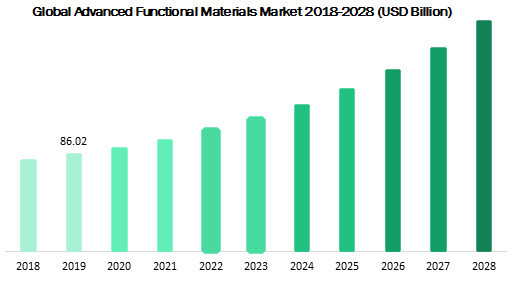Theme: Theme: Driving to the better future for Advance Materials & Nanotechnology
ADVANCED MATERIALS 2023
We are proud to announce 29th International Conference on Advanced Materials, Nanotechnology and Engineering, which is to be held during May 29-30, 2023.
On this great gathering, Organizing Committee invites participants from all over the globe to take part in this annual conference with the theme “Driving to the better future for Advance Materials & Nanotechnology”. Advanced Materials 2023 aims at sharing new ideas and new technologies amongst the professionals, industrialists and students from research areas of Advanced Materials and Nanotechnology to share their recent innovations and applications and indulge in interactive discussions and technical sessions at the event. The Conference will also have a space for companies and/or institutions to present their services, products, innovations and research results.
Advanced Materials and Nanotechnology involves the tracks like Advanced Materials and Functional Devices, Engineering Materials, Composite Materials, Magnetism & Multiferroism, Optical materials and plasmonics, Energy and Harvesting Materials, Nanotechnology-Basics to applications, Nano pore science, Nano medicine, Bio Nanotechnologies, Carbon nanostructures and graphene, Spintronics, Nanoparticle synthesis and applications.
Importance and Scope:
Advanced Materials plays a vital role in our lives because of its uniqueness in properties and extended application in various industries. These are the basis of modern science and technology. Advanced Materials are at the heart of many technological developments that touch our lives and find applications such as electronic materials for communication and information technology, biomaterials for better health care, sensors for intelligent environment, energy materials for renewable energy and environment, light alloys for better transportation, materials for strategic applications and more.
Nanotechnology is science, engineering, and technology conducted at the Nano scale, which is about 1 to 100 nanometers. Nanotechnology is the study of application of extremely small things and can be used across all the other science fields, such as chemistry, biology, physics, materials science, and engineering. Todays scientists and engineers are finding a wide variety of ways to deliberately make materials at the Nano scale to take advantage of their enhanced properties such as higher strength, lighter weight, increased control of light spectrum, and greater chemical reactivity than their larger-scale counterparts
Why to attend???
29th International Conference on Advanced Materials, Nanotechnology and Engineering professionals providing a premier technical forum for reporting and learning about the latest new generation technologies developed during the course of time along with discussing their applications. Events include hot topics presentations from all over the world and professional networking with industries, leading working groups and panels.
Meet Your Objective Business sector With individuals from and around the globe concentrated on finding out about Polymer science and Engineering, this is the best chance to achieve the biggest collection of members from everywhere throughout the World. Conduct shows, disperse data, meet with current, make a sprinkle with another product offering, and get name acknowledgment at this occasion. Widely acclaimed speakers, the latest methods, strategies, and the most up to date overhauls in Polymer science and Engineering are signs of this meeting.
Target Audience:
- Scientists.
- Professors.
- Research Scholars and students
- Nanotechnology Companies
- Nanotechnology Associations
- Advanced Materials and Nanotechnology Engineers
Track 1 : Nano Materials
Nanomaterial’s are foundations of Nano science and nanotechnology. Nanostructure science and advancement is a sweeping and interdisciplinary space of imaginative work improvement that has been winding up brutally worldwide in the recent years. It has the potential for changing the courses in which materials and things are made and the range and nature of functionalities that can be gotten to. Nano materials, Nano one materials, Nano structured materials, properties of nano material, nanoscale, nanoscale engineering.
Track 2 : Nano Structures
Nanostructured Materials (NsM) are Advanced materials with a microstructure the trademark length size of which is on the request of a couple (routinely 1– 10) nanometers. NsM might be in or far from thermodynamic concordance. Nanostructured Materials joined by supramolecular science are occasions of Nanostructured Materials in thermodynamic assertion. Nanostructured Materials containing nanometer-sized crystallites (e.g. of Au or NaCl) with various crystallographic introductions or possibly fabricated indications are far from thermodynamic friendliness.
Track 3: Nanoparticle Synthesis and Applications
Nanoparticle blend alludes to techniques for making nanoparticles. Nanoparticles can be gotten from Bigger atoms, or blended by base up techniques that, for instance, nucleate and develop particles from fine sub-atomic appropriations in fluid or vapour stage. Blend can likewise incorporate functionalization by conjugation to bioactive particles. Nanoparticles have one estimation that measures 100 nanometers or less. The properties of various conventional materials change when moulded from nanoparticles. This is routinely in light of the way that nanoparticles have a more important surface range per weight than greater particles which make them be more receptive to some unique iotas.
Track 4: Spintronics, Optical Materials and Plasmonics
Optical materials which are utilized in the development of focal points, mirrors, windows, crystals, polarizers, finders, and modulators. These materials serve to refract, reflect, transmit, and scatter. Detachment Materials. Materials in partitions innovations: Structural Membranes: Structural films perform control and stream works on the large scale level. Growing new materials for auxiliary individuals with more prominent consumption, disintegration and wear obstruction, and other improved properties will give operational vitality investment funds regarding longer hardware lifetimes, fewer shutdowns, and novel gear structures that preserve vitality. Notwithstanding, such auxiliary upgrades will bring about a restricted vitality decrease of the division procedure. Detachment Agents: Separation specialists perform on the miniaturized scale or atomic level connecting artificially and physically with the parts requiring partition. Advancements. Improvement of new and propelled materials isolating specialists for high-vitality division advances.
- Surface plasmons
- Electromagnetic waves
- Surface plasmon polaritons
- Plasma wavering
- Magneto electronics
- Spintronic-Logic Devices
- Inborn Spin
Track 5: Carbon Nanostructures and Graphene
Carbon is immovably connected with about all that we oversee in a general timetable. Due to its remarkable properties, for instance, high robustness at normal conditions, differing hybridizations, strong covalent bond game plan and straightforward of blends advancement, carbon has been a state of consistent excitement for a couple of districts. A nanostructure is a structure of fair size among minute and nuclear structures. Nano structural detail is microstructure at nanoscale.
Graphene is an allotrope of carbon as a two-dimensional, atomic scale, hexagonal cross segment in which one particle shapes each vertex. It is the basic helper segment of various allotropes, including graphite, charcoal, carbon nanotubes and fullerenes. It can moreover be considered as an uncertainly significant sweet-noticing iota, an authoritative occurrence of the gathering of level polycyclic fragrant hydrocarbons.
Track 6: Properties of Nano Materials
Nanoparticles are striking because of their tremendous surface area and these principles the duties made by the little heave of the material. Zinc oxide particles have been found to have better UV blocking properties contemplated than its mass substitute.
Track 7: Nanotechnology-Basics to Applications
Nanotechnology is the coordinated effort of the physical science, chemistry, biology, computer and material sciences incorporated with designing entering the nanoscale. This implies science and building concentrated on making the particles things and gadgets at the nuclear and atomic scale. The Study of the Controlling of Matter on an atomic and sub-nuclear scale. Generally Nanotechnology Deals with Structures Sized between 1 to 100 Nanometre in no short of what one Dimension, and incorporates making or changing materials or devices inside that size.
Track 8: Optical Materials and Plasmonics
The Diligence of Optical Materials is to give a technique for correspondence and development trade among researchers who are careful in materials for potential contraption applications. Plasmonics is the examination of the joint effort between electromagnetic field and free electrons in a metal.
Track 9: Composite Materials
A materials structure made out of no less than two physically one of a kind stages whose mix produces add up to properties that are not the same as those of its constituents. Composites can be incredibly strong and solidified, yet light in weight, so extents of value to weight and solidness to weight are a couple of conditions more essential than steel or aluminum.
Track 10: Advanced Materials and Functional Devices
This is the Creation of Advanced Materials at The Molecular or Nuclear Measure for the reason for propelling innovation, growing further effective items, making novel assembling advances, or enhancing the human learning. The capacity to rapidly and dependably set out numerous conductive layers with ultrafine determination has prompted the scaling down and minimal effort of most microelectronic parts. Practical Devices has set up itself as a pioneer in the HVAC, Building Controls, Energy Management, Energy Savings, Lighting Controls, and Wireless enterprises.
Track 11: Nanometrology and Instrumentation
Nano metrology is that the science of measurement at the nanoscale level. Nano metrology features a crucial role so as to supply nanomaterials and devices with a high degree of accuracy and reliability Nano manufacturing. This reference provides following further explanations: Nano metrology includes length or size measurements where dimensions are typically given in nanometres and therefore the measurement uncertainty is usually but 1nm as well as measurement of force, mass, electrical and other properties. They also pinpoint importance of Nano metrology for the longer term of nanotechnologies: Nanotechnologies, however defined, cannot progress independently of progress in Nano metrology.
Track 12: Advanced Materials and Nanotechnology
Nanomaterials are high importance nowadays in most fields such as Medicine, Chemotherapy, Drug delivery, Manufacturing processes, Paints, etc., because of their novel characteristics like increased strength, Chemical reactivity or conductivity. Artificially made nanomaterials are those which are engineered for an intention with the physio-chemical properties for a specific purpose or function. The methods of preparing nanomaterials also differ based on the purpose. Nanotechnology is highly used in detecting devices as their nanostructure with greater surface area per weight allows the electrical properties of the detecting elements to be changed easily. Nanotechnology controls matter at the atomic and molecular scale. Several applications of nanomaterials are used extensively in catalysis to spice up up chemical reactions.
Track 13: Science and Technology of Advanced Materials
Advanced Materials for Energy for energy sources, have to be compelled to build new discoveries for catalysts to convert feedstock’s into fuels, new architectures for higher star cells DSSC’s and materials for advanced energy storage, as well as metallic element batteries. New advanced materials area unit key to breakthroughs in biology, the setting, energy, transportation, and national security. Energy Materials area unit creating revolutionary advances within the science of materials discovery and synthesis.
Track 14: Nanosensors Devices
Nanosensors are platforms with a characteristic dimension - nanometer in scale, and add much an equivalent way as a sensor; they detect either minute particles or miniscule quantities of something. Nanosensors are chemical or mechanical sensors which will be wont to detect the presence of chemical species and nanoparticles, or monitor physical parameters like temperature, on the nanoscale. They find use in medical diagnostic applications, food and water quality sensing, and other chemicals.
Track 15: Nanocluster and Nanoscience
Nano clusters represent a gaggle of nanoparticles having a minimum of one nanoscale dimension and size distribution within a narrow range. They may be composed of the single atom of an element or combinations of atoms of different atom in stoichiometric ratios. The forces that hold these atoms together can be covalent, ionic, metallic, van der Waals forces, or hydrogen bonds. This difference in sorts of bonding forces involved is that the basis of differentiation among the various clusters. Nanoscience and nanotechnology are the study and application of extremely small things and may be used across all the opposite science fields, like chemistry, biology, physics, materials science, and engineering.
Track 16: Molecular biology and Materials science
Nanostructures are the fundamental machines that drive the cell histones and proteosomes and they are components of the mitochondrion, the chloroplast, the ribosome, and the replication and transcription complexes. In catalysis, nanostructures are the templates and pores of zeolites and other vitally important structures. The nanometer length scale is the largest one over which a crystal can be made essentially perfect. The ability to exactly control the arrangements of impurities and defects with reference to one another, and therefore the ability to integrate perfect inorganic and organic nanostructures, holds forth the promise of a totally new generation of advanced composites.
Track 17: Nano Technology and Photonics Communication
Nano Technology and Photonics Communication. Nano technology is that the branch of computing engineering that aims at miniaturization of gadgets. Nano technology believes in realigning atomics structure as to bring in maximum benefits and increase the efficiency levels of a gadget. This technology is immensely used in medicine, communication and automobile industry. Nanotechnology ropes in desired effect without spoiling or damaging the surrounding environment or tissue. Nanotechnology can also help immensely in rescue operations.
Track 18: Miniaturization Technology
Miniaturization Technology is aligning the atoms in the most effective way in a very limited place. Extraordinary devices will thus be created using the techniques of nano technology. The research tube talks about carbon tubes and nano transistors which are indispensable ingredients to the sector. Nanotechnology broadly refers to the manipulation of matter on the atomic and molecular scales i.e. where the objects of interest are 0.1-100 nanometer n size. Atomic diameters represent the lower end of this range at tenths of nanometers.
Man has created wonders by changing the molecular structure in material synthesis. Molecules might be aligned in such how on produce desired end in the areas of strength, ductility, reactivity, conductivity and capacity.
Track 19: Nanoparticle and Nanoscale Research
Nowadays, gene delivery for therapeutic objects is considered one of the most promising strategies to cure both the genetic and acquired diseases of human. The design of efficient gene delivery vectors possessing the high transfection efficiencies and low cytotoxicity is considered the major challenge for delivering a target gene to specific tissues or cells. On this base, the investigations on non-viral gene vectors with the ability to overcome physiological barriers are increasing. Among the non-viral vectors, nanoparticles showed remarkable properties regarding gene delivery such as the ability to target the specific tissue or cells, protect target gene against nuclease degradation, improve DNA stability, and increase the transformation efficiency or safety.
- Nanoparticles in gene delivery
- Lipid-based nanoparticles
- Polymer-based nanoparticles
- Inorganic nanoparticles
Track 20: Biomedical Nanotechnology
The major thrust of biomedical nanotechnology is to apply the benefits of nanotechnology to healthcare e.g., imaging and diagnostics; Nano drugs; drug delivery; prostheses; and implants; etc. Nanotechnology has been earlier used to improve drug properties. For example, pacliaxel Taxol, an anticancer drug, which is used to treat primary epithelial ovarian carcinoma, breast, colon, and lung cancers, exhibits low water solubility and, therefore, poor bioavailability. Therefore, it was formulated in Chremophor EL polyethoxylated castor oil, which has been implicated in several drug associated toxicities. To overcome these shortcomings associated with the use of Cremophor, paclitaxel bound to albumin nanoparticles Abraxane were developed for clinical use. There is a huge interest in employing nanotechnology for cancer drug delivery. The interest in cancer drug delivery stems from the fact that the nanoparticles passively target tumors by a process called enhanced permeability and retention EPR effect, as elucidated by Maeda and coworkers. It occurs because the tight junctions between endothelial cells of micro vessels measure around 2 nm 6 nm in kidney, liver, and spleen, whereas the pore size of tumor micro vessels varies from 100 to 1200 nm.
Nano clusters represent a group of nanoparticles having at least one nanoscale dimension and size distribution within a narrow range. They may be composed of the single atom of an element or combinations of atoms of different atom in stoichiometric ratios. The forces that hold these atoms together can be covalent, ionic, metallic, van der Waals forces, or hydrogen bonds. This difference in types of bonding forces involved is the basis of differentiation among the different clusters.
The research report on Global Advanced Materials and Nanotechnology Market 2020 keenly analyzes significant features of the industry. The analysis servers market size, latest trends, drivers, threats, opportunities, as well as key market segments. It is based on past data and present market needs. Also, involve distinct business approaches accepted by the decision makers. That intensifies growth and makes a remarkable stand in the industry. The Advanced and Nanotechnology Market size is forecast to reach $ 121.80 Billion by 2025, after growing at a CAGR of 14.3% during 2020-2025. The growth of the global nanotechnology market is driven by factors such as the rise in nanotechnology adoption in medical diagnosis & imaging and technological advances in nanotechnology devices. In addition, rising government support and R&D funding and the advent of self-powered nanotechnology devices are providing lucrative opportunities for the nanotechnology market. Furthermore, overall increases the growth of the Nanotechnology Industry over forecast period.

Electronics and Semiconductor sector has been the primary market for Nanotechnology for many years and is expected to grow at the CAGR of 16.4% over the forecast period from 2020 to 2025. The production and demand in top countries for electronics & semiconductor industry are expected to boom over the next five years. The emergence of developing nations with increasing penetration of consumer electronics fuels the market growth. As nanotechnology has wide range of applications in this sector, the market is estimated to grow at a significant rate during the forecast period. Some of the recent trends of semiconductor that has raised the demand for more semiconductors are the fabrication of artificial intelligence chips which can be used in several applications like smartphones for facial recognition, voice commands, and image-processing. China exports around 50% of the worldwide technology supply chain; hence the global tech sector is predicted to face massive disruptions because of the spread of the coronavirus and its effects on production in China. The outbreak has already valued at 12% decline in smartphone production, while smart watch production set down a drop of about 16%. Laptops, PCs and smart speakers are other products that have set down significant declines.
Conference Highlights
- Track 1 : Nano Materials
- Track 2 : Nano Structures
- Track 3: Nanoparticle Synthesis and Applications
- Track 4: Spintronics, Optical Materials and Plasmonics
- Track 5: Carbon Nanostructures and Graphene
- Track 6: Properties of Nano Materials
- Track 7: Nanotechnology-Basics to Applications
- Track 8: Optical Materials and Plasmonics
- Track 9; Composite Materials
- Track 10: Advanced Materials and Functional Devices
- Track 11: Nanometrology and Instrumentation
- Track 12: Advanced Materials and Nanotechnology
- Track 13: Science and Technology of Advanced Materials
- Track 14: Nanosensors Devices
- Track 15: Nanocluster and Nanoscience
- Track 16: Molecular biology and Materials science
- Track 17: Nano Technology and Photonics Communication
- Track 18: Miniaturization Technology
- Track 19: Nanoparticle and Nanoscale Research
- Track 20: Biomedical Nanotechnology
To share your views and research, please click here to register for the Conference.
To Collaborate Scientific Professionals around the World
| Conference Date | May 29-30, 2023 | ||
| Sponsors & Exhibitors |
|
||
| Speaker Opportunity Closed | |||
| Poster Opportunity Closed | Click Here to View | ||
Useful Links
Special Issues
All accepted abstracts will be published in respective Our International Journals.
- Journal of Materials Science and Nanomaterials
- Journal of Material Sciences & Engineering
- Journal of Nanosciences
Abstracts will be provided with Digital Object Identifier by



















